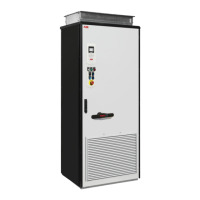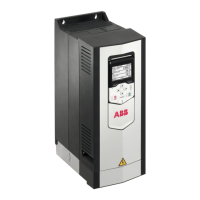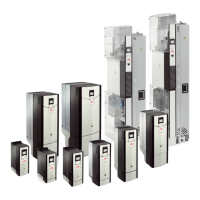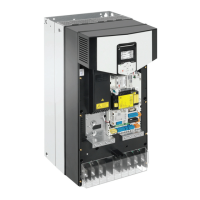162 Resistor braking
Selecting a custom resistor
If you use a resistor other than the default resistor, make sure that:
1. The resistance of the custom resistor is greater or equal than the resistance of the
default resistor in the rating table:
where
2. The load capacity of the custom resistor is higher than the instantaneous maximum
power consumption of the resistor when it is connected to the drive DC link voltage by
the chopper:
where
Selecting and routing the external brake resistor cables
Use the same cable type for the resistor cabling as for the drive input cabling to ensure
that the input fuses also protect the resistor cable. Alternatively, a two conductor shielded
cable with the same cross-sectional area can be used.
Minimizing electromagnetic interference
Obey these rules in order to minimize electromagnetic interference caused by the rapid
current changes in the resistor cables:
• Shield the braking power line completely, either by using shielded cable or a metallic
enclosure. Unshielded single-core cable can only be used if it is routed inside a
cabinet that efficiently suppresses the radiated emissions.
• Install the cables away from other cable routes.
• Avoid long parallel runs with other cables. The minimum parallel cabling separation
distance should be 0.3 meters.
• Cross the other cables at right angles.
• Keep the cable as short as possible in order to minimize the radiated emissions and
stress on chopper IGBTs. The longer the cable the higher the radiated emissions,
inductive load and voltage peaks over the IGBT semiconductors of the brake chopper.
R Resistance of the custom resistor.
WARNING! Never use a brake resistor with a resistance smaller than R
min
.
The drive and the chopper are not able to handle the overcurrent caused by
the low resistance.
R
min
Resistance of the default resistor
P
r
Load capacity of the custom resistor
U
DC
Drive DC link voltage.
1.35 · 1.25 · 415 V DC (when supply voltage is 380 to 415 V AC)
1.35 · 1.25 · 500 V DC (when supply voltage is 440 to 500 V AC) or
1.35 · 1.25 · 690 V DC (when supply voltage is 525 to 690 AC)
R Resistance of the custom resistor
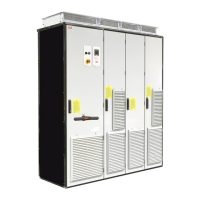
